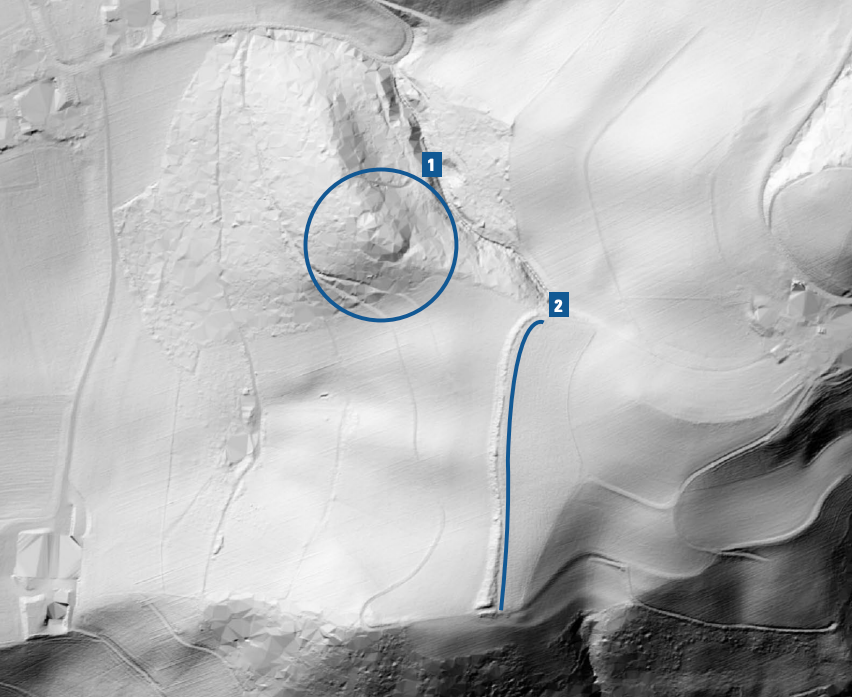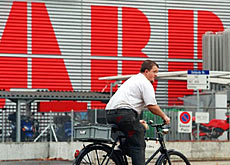Technology still reigns at ABB

The debt-ridden engineering group ABB may be struggling to sort out its finances but its engineers continue to produce award-winning technology.
A wireless assembly line robot, the first of its kind, is the latest innovation to emerge from the Swiss-Swedish firm’s technology division.
ABB is one of the first companies to apply wireless technology for industrial applications.
Its assembly line robot, called Robbie, is fitted with wireless sensors which communicate with a central computer using radio waves rather than a cable.
Robbie’s power supply is wireless too with energy from a magnetic field being converted into electrical power.
Connecting cables of industrial robots frequently wear out and must be replaced. The hope is that wireless sensors will make assembly-line robots more reliable.
Robbie was unveiled at the technology fair in Hannover, Germany, earlier this year, and recently won top honours in the European Innovation Awards held by the Wall Street Journal Europe.
Robbie breaks free
“Wireless technology is increasingly important to us,” said Markus Bayegan, ABB’s chief technology officer. “The benefits include flexibility, mobility and the reduction of a whole range of costs.
“With the tremendous investment which has been done in wireless technology because of mobile phones, the technology is getting cheaper and more appropriate for other purposes like industrial applications.”
Work on freeing Robbie from his wires began in earnest in 1998. From 1999 when they had their first prototype, researchers reduced the wireless sensor from the size of a shoebox to a matchbox.
“The innovative part of Robbie is not only that the communication is wireless but that the power supply of this sensor is done through a magnetic field which is created around the robot so that we really do not need any cable,” Bayegan told swissinfo.
Bayegan dismissed fears of health risks saying that the level of electrical radiation in a factory is not significantly increased by wireless technology.
The company hopes to begin selling the wireless sensors commercially from the second quarter of 2003.
Sensors are just one example of how wireless technology is moving beyond mobile phones and into industry.
ABB has also developed a wireless hand-held display that allows plant operators to roam the factory floor and still be connected to control room information and controls.
Job losses
ABB is increasingly concentrating its efforts on the core businesses of power and automation technologies.
It expects to shed about a third of its workforce of 146,000 by trimming its core businesses and selling off other divisions.
“Technology has been the backbone of ABB’s business and remains so,” said Bayegan. “During all the recent turbulence, ABB’s management has stressed its importance and committed itself to investment.”
The company invests roughly seven per cent of revenues or $1.6 billion in research and development each year.
On average, about 75 per cent of business is based on products developed in the past five years.
Some 6,000 scientists and technology experts work at corporate research centres and research and development laboratories around the world.
In product development units, the technology is taken from the labs and incorporated into specific products.
“Then on the front line we have our engineering resources who take the products and build them into specific solutions for our customers,” explained Bayegan.
Emerging technologies
A wide range of industries use ABB’s equipment and systems, including automobile firms like Ford, Volvo and DaimlerChrysler; brewers Heineken and Carlsberg; mobile phone makers, Nokia and Ericsson; oil giants like BP, Shell and ChevronTexaco, pulp and papermakers; utilities, mining companies, chemical makers and pharmaceutical companies like Merck and Pfizer.
The company also works closely with 70 leading universities and research institutes in Europe, North America and Asia.
“Most of the work we are doing [is focused on] anticipating what future business and future products will look like,” said Bayegan.
“Then we look outside at how the frontiers of technology are moving in universities and in other research institutions.
“We periodically study the patent situation and out of this huge amount of information, we compile a technology strategy which is what we are going to do for the next two, three and five years.”
swissinfo, Vincent Landon
ABB is among the few companies to use wireless technology for industrial applications.
Its latest innovation is a wireless assembly robot called Robbie.
Robbie is powered by a wireless sensor, which the company hopes to be selling by mid-2003.
The cash-strapped firm is increasingly concentrating its efforts on the core businesses of power and automation technologies.

In compliance with the JTI standards
More: SWI swissinfo.ch certified by the Journalism Trust Initiative










You can find an overview of ongoing debates with our journalists here . Please join us!
If you want to start a conversation about a topic raised in this article or want to report factual errors, email us at english@swissinfo.ch.